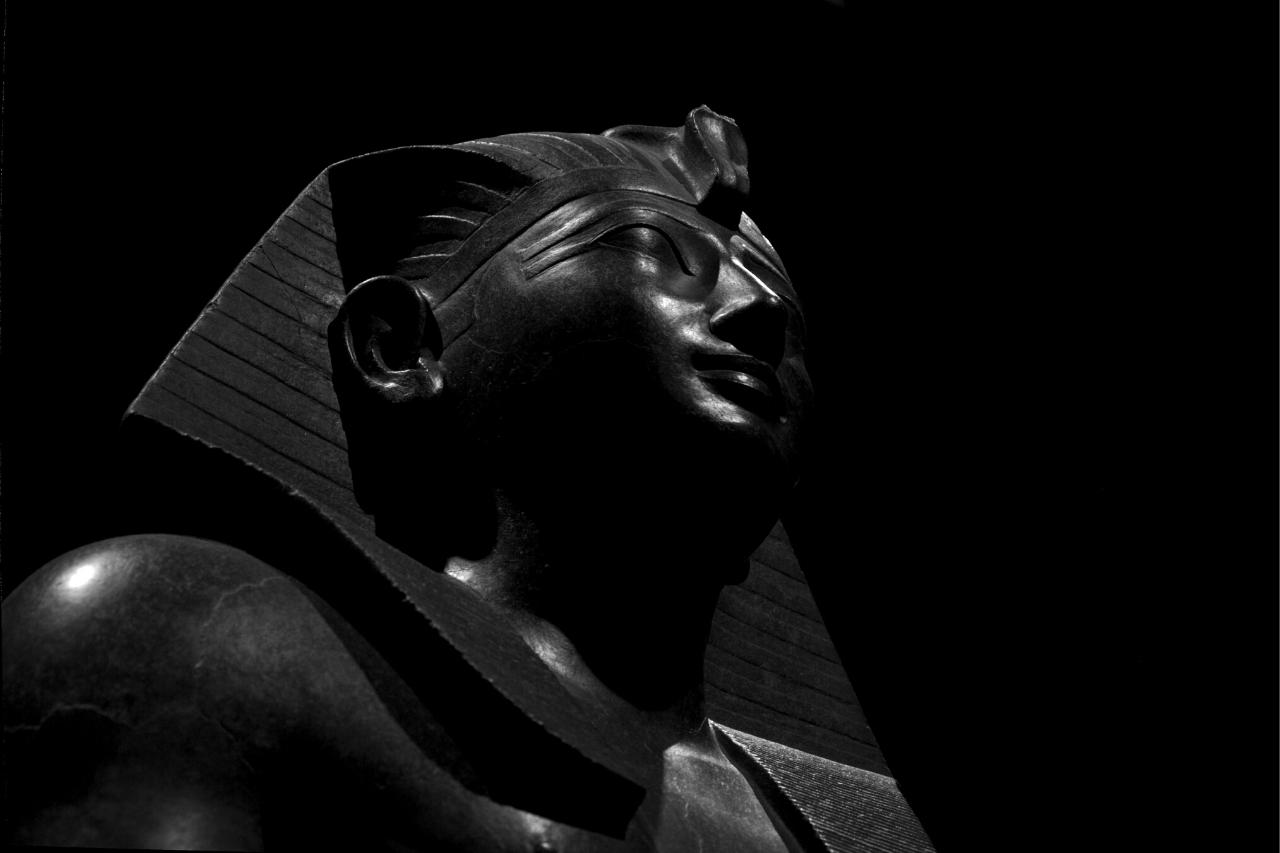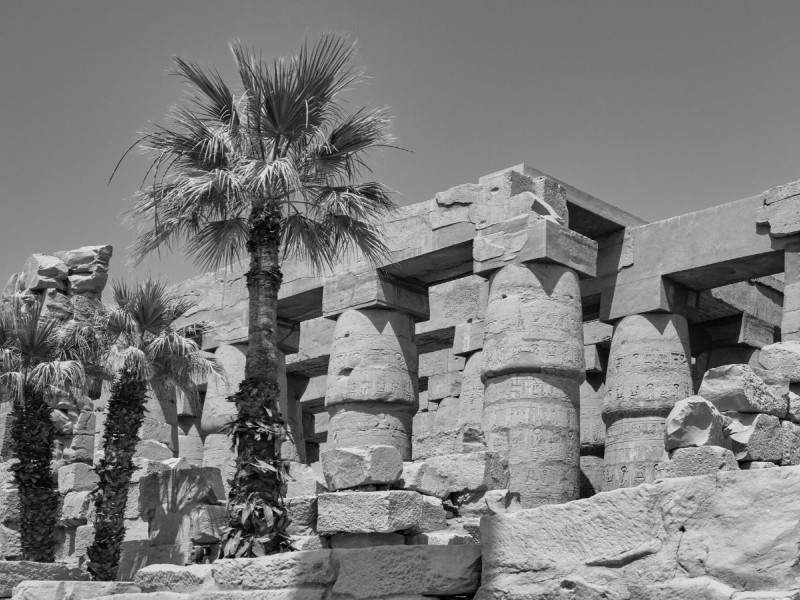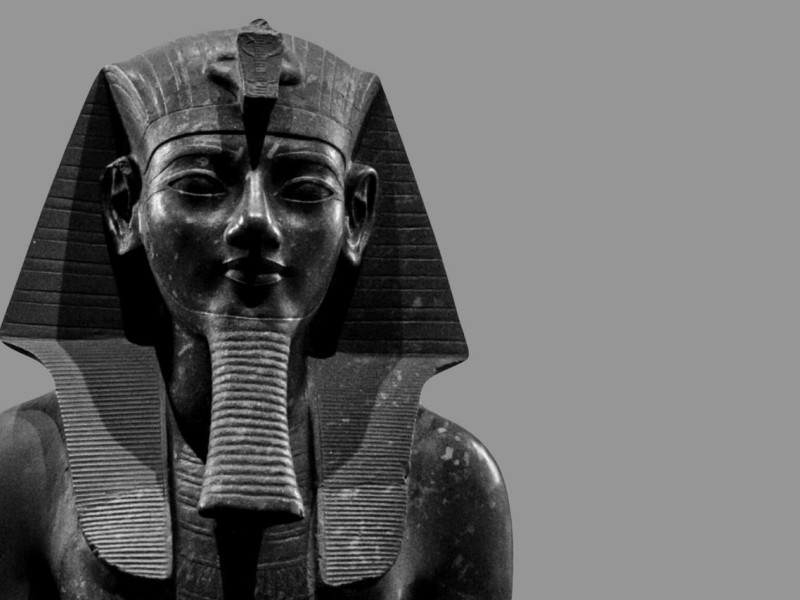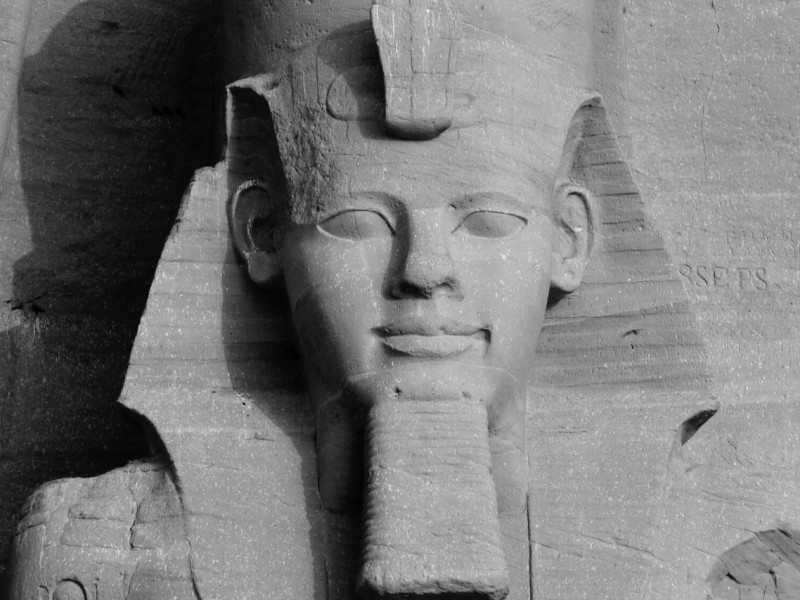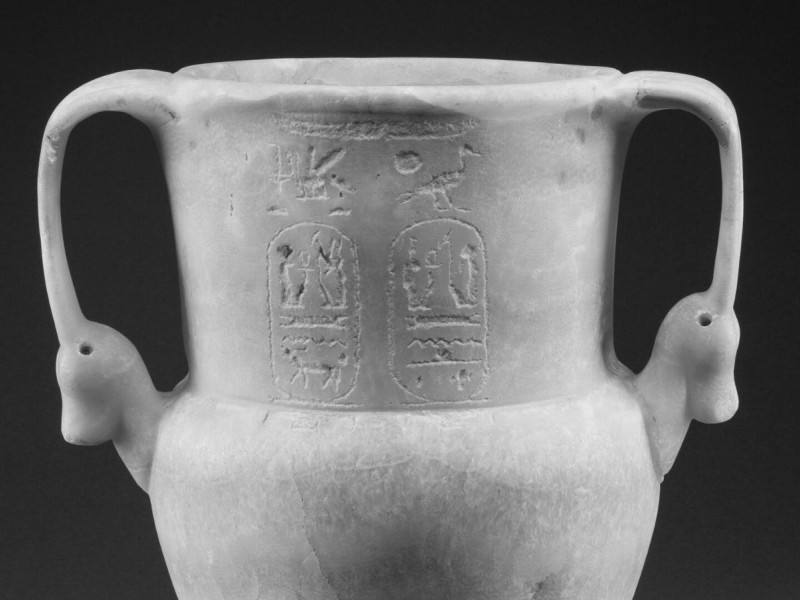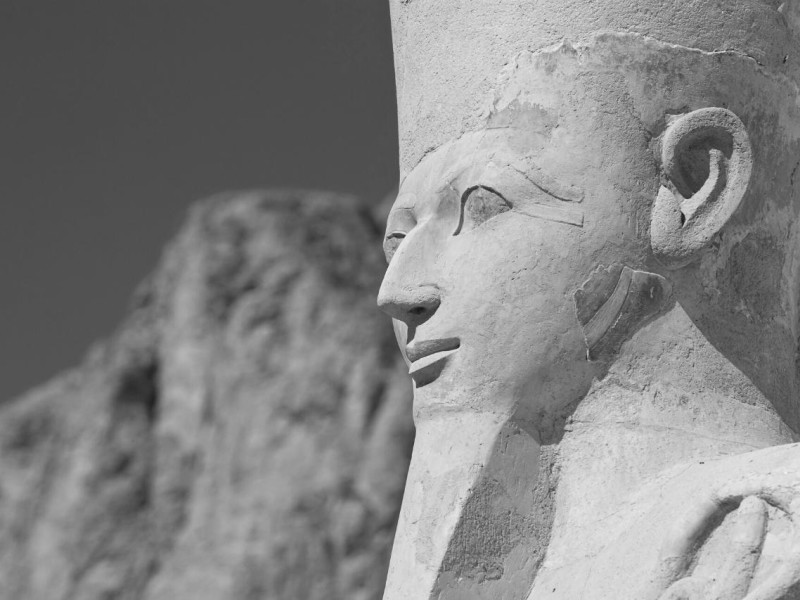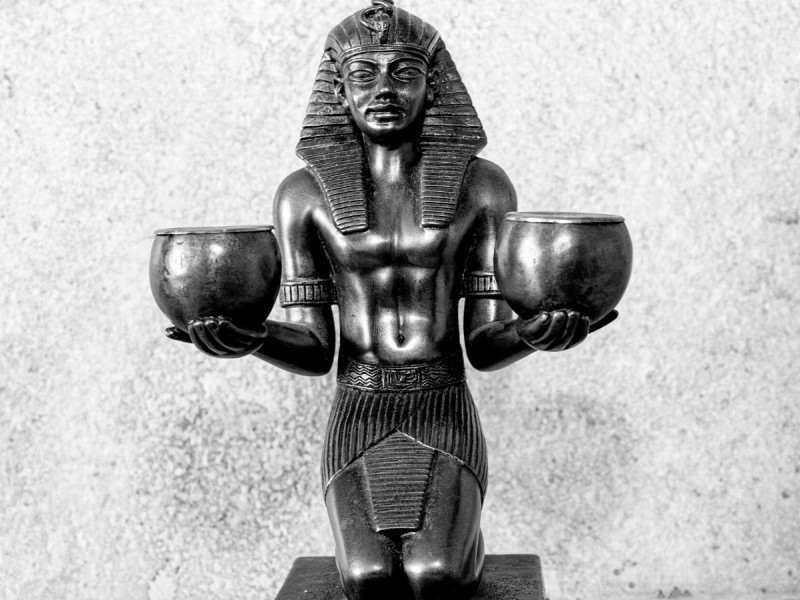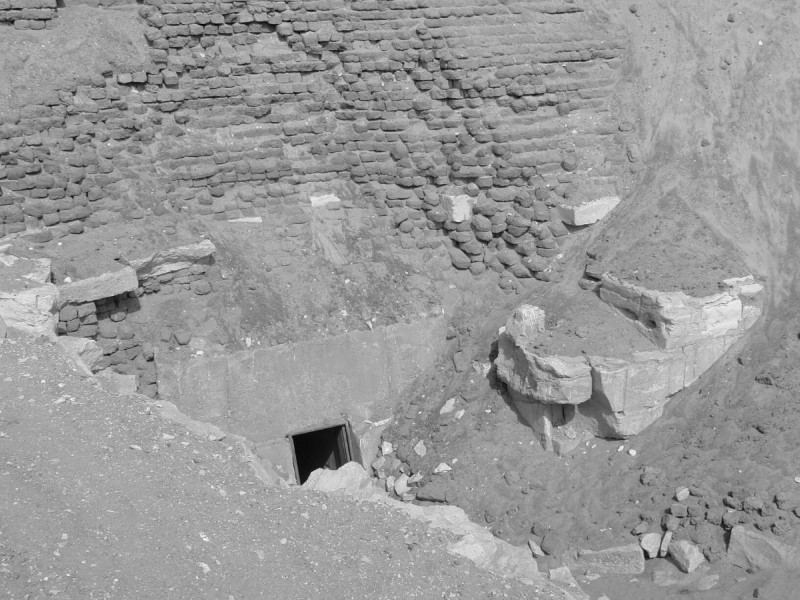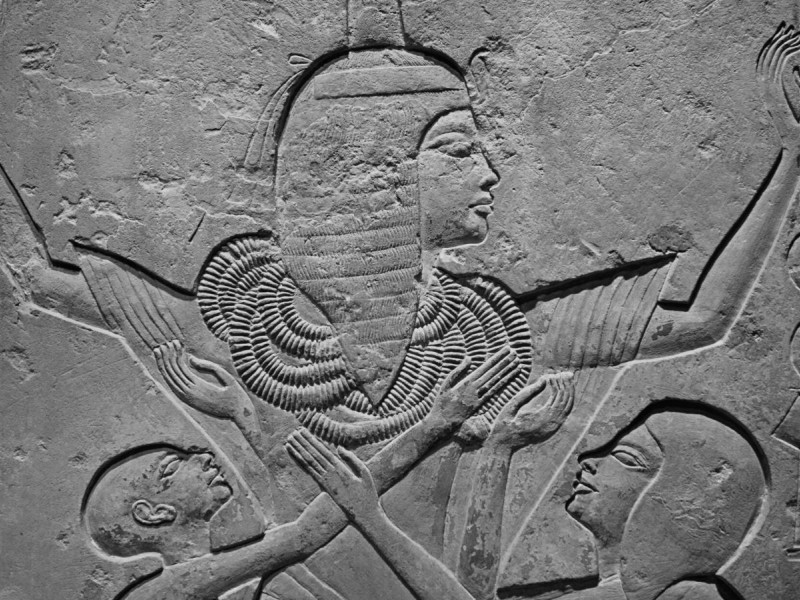Thutmose III: The Greatest Tactician and Wealthiest Pharaoh of His Era
Thutmose III was the sixth pharaoh of the 18th dynasty, reigning approximately from 1479 BC to 1425 BC, and was considered the longest reigning ruler in Egyptian history.
He became a pharaoh at the age of two years old, having his stepmother, Queen Hatshepsut, as co-regent for around 22 years.
As he became a pharaoh at a young age, Thutmose III was considered the longest ruler of the 18th dynasty, approximately 53 years. Read to find out about this young reigning pharaoh.
Who Was Thutmose III?
Pharaoh Thutmose III was the son of the late Pharaoh Thutmose II and his second wife, Iset. His name can also be spelled as “Tuthmosis” or “Thotmes,” which means “Born of the god Thot.” Thot was the ancient Egyptian god of the moon, wisdom, reckoning, and writing. Meanwhile, his birth name Menkhperre means “Eternal are the Manifestations of Ra.”
As there was no pure royal prince next to his father, he was immediately appointed to the throne when his father died of an unknown disease. That was when Queen Hatshepsut, King Thutmose II’s “Great Royal Wife,” came into the picture.
Thutmose the Third was only three years old when his father died, so he spent his youthful years in school and athletics and, most importantly, learning about military tactics and strategy. He probably went to some military campaigns commissioned by his co-regent aunt Queen Hatshepsut to sharpen his military skills in a real battlefield.
During which he developed exceptional skills in archery, horsemanship, and combat. He also took his time to learn the culture and values of Egypt—even beyond Egyptian borders.
Co-regent-Turned-Pharaoh of the Throne
While young Thutmose III spent his days learning and developing his skills to be a great pharaoh, Queen Hatshepsut, his co-regent for seven years, eventually declared herself as a pharaoh. This was noteworthy to all Egyptians as it was centuries ago when a female pharaoh last took over the throne. One of the courtiers said, “She directed the whole land according to her wishes.”
Queen Hatshepsut was so great in her temporary regency that she was considered a powerful pharaoh. Her time was regarded as one of the most prosperous periods in Egypt’s history. A number of documentaries have said that Thutmose III was overshadowed by his aunt, but he saw it as a good thing and let her exert her power, or didn’t he?
Beginning of Successful Military Campaigns
After 22 years of being a pharaoh, Queen Hatshepsut died, and King Thutmose III ascended the throne and solely ruled, surpassing what other pharaohs did for Egypt. When he became the sixth pharaoh of the 18th dynasty, he immediately planned to restore the authority of Egypt to its surrounding regions. His first and well-known military campaign was the “Battle of Megiddo”—modern day Israel.
The king of the Levant threatened Pharaoh Thutmose III of invading Egypt or turning their back against the empire. What King Thutmose III did was to ignore them and instead initiate a land siege by starving the residents for almost seven months to force them to surrender. This was the most descriptive narrative in a battle’s history.
This battle was documented thoroughly by his private military scribe, Thanuny, as he traveled with the army and recorded the events chronologically in a collection of inscriptions called the Annals of Thutmose the Third. He also recorded his other conquests and reign.
The Tactic of Mitanni
Another campaign which was not fully documented in the Annals happened in the ports of the Phoenician coast in Syria, which was converted into Egypt’s supply base. The valuable trade center of Kadesh and other valleys of surrounding cities were taken.
To prove his mighty military leadership, in his eighth campaign, he initiated an attack on the state of Mitanni, a Hurrian-speaking country with an Indo-Aryan ruling class.
However, to reach Mitanni, Thutmose III and his troops needed to cross over the Euphrates River. This raid made him the next pharaoh since his grandfather, Thutmose I, to cross over the Euphrates River. He commemorated his crossing by placing a second stele next to his grandfather’s stele that had been placed several decades earlier.
Thutmose III also led one last campaign in his 50th regnal year toward Nubia. He recorded a total of 18 campaigns and captured 350 cities with no records of defeat.
Artistic and Monumental Achievements
King Thutmose III did not waste any of his time to prove to Egyptians that he was worthy of the throne in spite of being the son of a second wife. Although the advancement of glass making had already been started in the early years of the 18th dynasty, it was perfected by crafters, which enabled them to create glass drinking vessels.
This craftmanship antique is called faience today. The art form was also developed by way of elaborate paintings in the finest artworks. Some Egyptologists said that King Thutmose III renovated some tombs from his predecessors, replacing them with new ones having more intricated details on them.
Artistic Constructions
King Thutmose III’s artisans erected monuments, buildings, pylons, free-standing columns, and obelisks that can be seen up to this day. He enlarged the Temple of Amon built by Pharaoh Ahmose I at Karnak and then built projects at the Temple of Munt.
He constructed two splendid obelisks that now can be seen standing in Papal Rome and in Caesaropapist Constantinople. Inside the Temple of Amon, Thutmose III planned to build his tekhen waty or unique obelisk.
Unfortunately, this obelisk was not erected, not until Thutmose IV sat on the throne, which was 35 years later.
It was then moved by the fourth Roman emperor, Constantius the Second, via the Nile River through the Mediterranean to Rome and placed in front of the Lateran Palace that can be seen up to this day.
It is considered the largest Egyptian obelisk in the world and is now called the Lateran Obelisk. Thutmose III was a great builder and constructed over 50 temples, although some of these are now lost and only mentioned in written records.
Teachings of the Culture
While expanding his empire to its surrounding regions, Thutmose III never failed to acquire further tributes through gifts, elephant hunting, and even human capital from the captured land. He sent sons from captured rulers to Egypt to educate them at the court.
His sons were taught Egyptian culture and gained their sympathy before sending them back to their countries to become puppet kings. He put to his advantage the Hyksos ruler’s weaponry (the invader rulers of Lower Egypt many years ago) by learning to create and use them, such as the chariot for horses and a sword called khopesh.
Thutmose III’s Love of Nature
Channeling his inner artist and love of nature, he encouraged Egyptians to create gardens in their respective houses. He also created public parks, lakes, and ponds for people’s recreation and enjoyment. He then created his own private garden in his palace’s backyard and temple at Karnak, planting all his collected plants and flowers from his military campaigns.
The pharaoh’s love of nature was depicted on the glass artifacts from his reign that were found in the mortuary temple of his tomb.
Controversial Defacing of History
Returning to Queen Hatshepsut’s reign, the female pharaoh constructed several monuments, buildings, and temples, proving that she could be as powerful as a male pharaoh could be.
The queen made sure to inscribe this in history by making at least 10 life-sized kneeling statues of her. After her death, many of the statues and monuments depicting her, including her famous mortuary temple in Deir el-Bahri, were removed from public places, defaced, and destroyed.
Theories stated that Thutmose III might have despised his aunt for claiming the throne that was intended for him for two decades. This assumption was denied as records showed that King Thutmose III did not eradicate Hatshepsut’s religious and administrative works. He was even assigned as a head chief in military, which would make it easy for him to remove Queen Hatshepsut from the throne if he had a lingering grudge against the queen.
Nonetheless, other than removing Queen Hatshepsut’s public monuments and statues, her images and name were left unscathed within the interior of her mortuary temple. Whatever could be the definitive reasons behind this act, Thutmose III and his successors acknowledged and honored her by not annihilating all the traces of the female pharaoh.
Current Findings
Modern-day scholars tried to explain the erasure of history as they interpreted the evidence as an act of damnatio memoriae (condemning a person to removal from official accounts). The possible reason why King Thutmose III committed such an act was to ensure the smooth succession under his lineage if ever there’s an equal or even better claim for the throne.
Removal of a pharaoh’s name is only justified if there is evidence that the person committed serious offenses according to Execration Texts from ancient Egypt. Thus, Queen Hatshepsut’s case was not proven to be in violation.
Another reason behind this could be connected with the cultural value of Egypt itself. There was so called ma’at, which means “harmony and balance.” This referred to the tradition that conservative ancient Egyptians were trying to maintain to prevent losing the stability and balance of the country.
Over the centuries, the rightful heir to become a pharaoh will always be the eldest son or a male in the royal family. Such a tradition was broken when Hatshepsut became a pharaoh, which could also be the reason behind defacing Hatshepsut’s history.
Thutmose III’s Family
Continuing the lineage was one of the major obligations a pharaoh could fulfill. King Thutmose III married Satiah, who bore his eldest son, Amenemhat. Other than her, he had three foreign wives, namely, Menwi, Merti, and Menhet, who were discovered to be buried together. However, the fateful successor of his throne, Amenhotep II, was born from his second wife turned Great Royal Wife, Merytre-Hatshepsut.
Original title holder of Great Royal Wife, Satiah anticipated her son’s succession, but her son died at the 24th regnal year of Thutmose III. Queen Satiah followed in the 34th regnal year of the pharaoh. This resulted in the transfer of the title to Merytre-Hatshepsut, with Amenhotep II being a rightful heir. Thutmose III children from Merytre-Hatshepsut also included Menkheperre, Nebetiunet, Meryetamun (C), Meryetamun (D), and Iset.
He made his son, Amenhotep II, co-regent until he turned 18 years old. At such time, he considerably focused on the empire’s stabilization, prosperity, and peace.
Thutmose III’s Statues and Regnal Years
The construction of statues in this era was more progressive than that of the idealized traditional-style statues of the past pharaohs. Pharaoh Thutmose III was depicted as a tall handsome man in his beautifully sculpted statues, which were prevalent during the king’s reign.
The inconsistencies in data from the pharaoh’s regnal years are still debated up to this day. The Lower and High Chronology of Egypt gave two different record dates of when he started his reign: 1479 BCE to 1425 BCE and 1504 BCE to 1450 BCE.
How Did Thutmose III Die
Scholars studied how did Thutmose III die and came up with the result of a natural cause because of old age. Fortunately, the length of Thutmose III reign was known because of the information found in the tomb of his court official, Amenemheb. He recorded the death of the pharaoh in the 54th regnal year on the 13th day of the month.
Mummy and Burial
King Thutmose III died in 1426 BCE, and Thutmose III mummy was the third one to be buried in the Valley of the Kings (KV34) in western Thebes. This was discovered by Victor Loret in 1898, together with the mummies of the 18th, 19th, and 21st dynasty pharaohs.
He was known as a small man, not above 5 feet in height (1.6 meters), with an unscathed face, a large bridge nose, and a smile plastered over the face. This indicates that King Thutmose III died in an unpainful way. Egyptologists also found the complete Amduat, a religious funerary text of the new kingdom.
Some sources stated that he was initially buried at Deir el-Bahri beside Queen Hatshepsut’s mortuary temple. To protect King Thutmose III from tomb robbers, he was reburied to the Valley of the Kings.
Biblical Context Integration
It has long been debated over the years about who exactly was the pharaoh indicated in the Book of Exodus. The pharaoh of Egypt characterized from the Bible was wealthy, excellent in military campaigns, and good at riding chariots. From all successful pharaohs with no record of defeat, Thutmose III had increased his treasury in Egypt from his campaigns, and he was renowned as the wealthiest pharaoh at the time.
Thutmose III and Moses
Various notable sources emphasized the connection between Thutmose III and Moses in Exodus.
First, before Amenhotep II became the rightful heir of the throne, he had a half-brother named Amenemhet, which history stated to have died with no definitive cause. Stated from the biblical context was the plague of the first born, in which the first-born son of the pharaoh up to the first-born son of a female slave would die at midnight (Exodus 11:4–9).
Second, the Book of Exodus depicted that a “pharaoh’s daughter” drew out a baby from the Nile River and named him Moses. Chronological dates could be inconsistent, but the situation implied that it could be Queen Hatshepsut in her younger years who adopted the baby boy and educated Moses about Egyptian culture and military. Thus, Thutmose III and Moses could have known each other before Moses was exiled from Egypt.
Third, it was Thutmose III besides his grandfather, Thutmose I, who went beyond northern Syria, much deeper to south Nubia. Dating the Exodus, it was early in mid-18th dynasty as Egyptians also grew to control Canaan during the 18th dynasty.
From all presented theories and speculations, this assumption could not be proven because each side of the history lacks convincing evidence that would confirm the following data: Queen Hatshepsut as the said “pharaoh’s daughter”, Pharaoh Thutmose III as the pharaoh of Exodus, Amenemhat as a victim son of the plague, and the timeline when Egyptians were ruling the God of Moses’ promised land.
Conclusion
King Thutmose III’s reign was one of the eventful timelines a pharaoh could have. From training at such a young age to taking over the throne from his co-regent-turned-pharaoh aunt, he led Egypt to become the most powerful empire in the 18th dynasty.
Such a young great man was able to conquer almost 350 cities during his reign, exploiting all resources to advance Egypt and pursue a major improvement that ancient Egypt history could witness.
Here are the remarkable achievements he had in his prosperous years:
The famous and detailed battle record he had as a pharaoh: The Battle of Megiddo
Excellent leadership, athleticism, craftmanship, and military achievement at such a young age
The expansion of surrounding regions and perfection of glass making (glass vessel)
Promotion and recognition of the importance of education, art, and music
Construction and expansion of monuments, temples, and obelisks that have been well preserved and can be seen up to this day
Pharaoh Thutmose III lived his regnal years contented, as can be seen through his mummy.
Some scholars even consider Thutmose III as the “Napoleon of Egypt,” except that Pharaoh Thutmose III showed no record of defeat. Indeed, his was one of the greatest and most prosperous reigns in Egypt.


